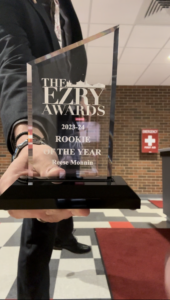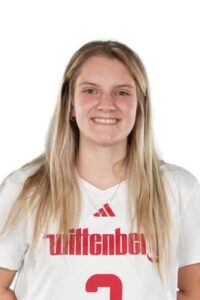Homecoming is a great time for Wittenberg to show off growth to their alumni since they were last here. For some, it has been many years since they were last on campus and for some only a few.
One thing that hasn’t changed is what Wittenberg has advertised to be a “game-changer in Division III athletics,” an athletic facility for which the ground has yet to be broken.
The groundbreaking for the facility is set for March 2017, and the construction is expected to take a year to 18 months to complete. With five months until then, approximately $6 million is left of the $40 million total.
“There is no going back now,” said Wittenberg’s Interim President Richard Helton on Thursday. “There is no ‘Plan B’.”
Thursday marked the official public launch for the Health, Wellness, & Athletics (HWA) Restoration Expansion Initiative, a project that has been in the works over the past two years. Just about every varsity sport at Wittenberg will be able to utilize it to some capacity.
A big project such as a new facility should give a buzz of anticipation on campus. However, for as long as these plans have been in the works, students not only have been concerned with where the money is coming from, but also why the university, which may or may not be in the best place financially, focused on such a big and costly project.
According to 2015 Institutional Research, approximately one of every three students on campus participates in varsity sports on campus. This number does not include students who major in a sport-related field, are involved in intramural and/or club sports, or involved in another club that utilizes the HPER center, such as Swing Dance club or Caving club.
“Any student, any faculty or staff member, and any member of the community will be able to utilize the new facility,” said Michael DeCourcy, director of the Wittenberg Fund. “Just one facility will be able to bring the Springfield area together.”
Wittenberg has made plans for the facility to incorporate not only athletics, but more importantly academics. Classrooms are an integral part of the initiative. Rooms will feature up-to- date technology and the space to learn through experience. For example, experience-learning is utilized in fields such as education in sports medicine.
“This project is about the students now, not about what alumni were involved with when they were on campus,” DeCourcy said. “We are looking for alumni to invest in the future of Wittenberg. This facility will make an enormous impact on the students. We are looking at new growth, new initiatives, new opportunities. This is big.”
The new facility will be placed on top of the current practice field behind the Health, Physical Education, & Recreation (HPER) Center. In addition, the 1929 Fieldhouse will have restoration work. The structure will have an indoor 300-meter track and host as 100-yard turf field.
“Our goal with this facility is to set ourselves apart,” Helton said. “This is how we ‘Tiger Up’.”





